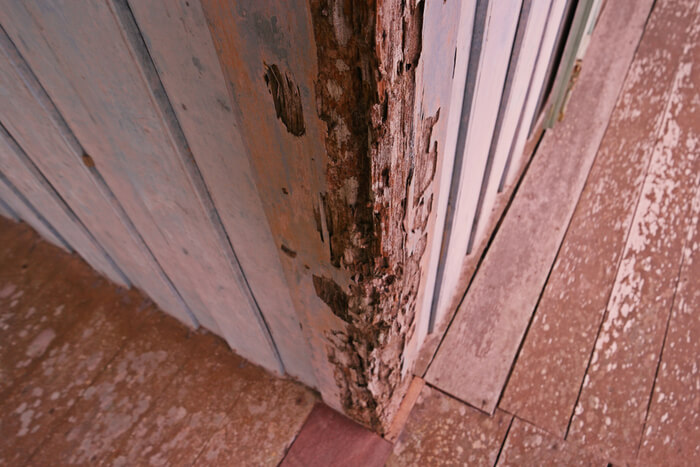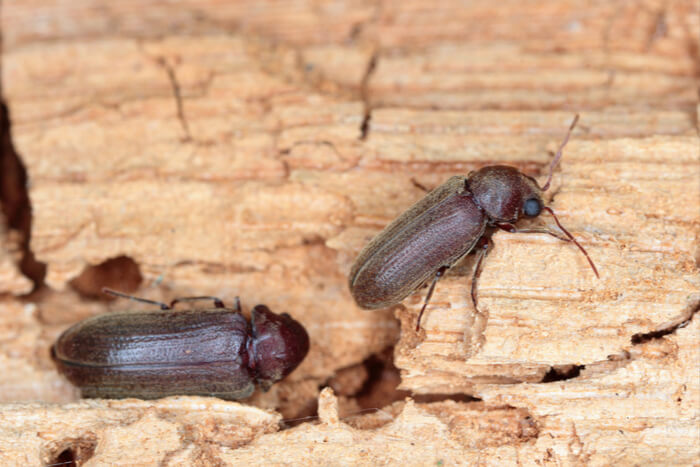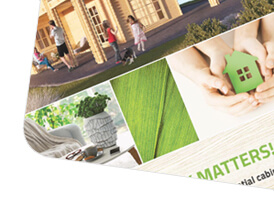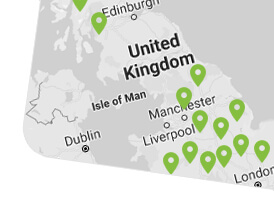We all know where the wood for construction comes from. Forests are always full of other living being. Ones are friendly to plants and the other called pests. The latter ones do a lot of damage for leaves, stems, roots and other parts of the tree. Cut and processed timber is sensitive to environment effects and to damage of wrecker. In this article we want to introduce you with the major timber pests and give some useful tips how to avoid them, and make your log cabin sturdy and durable.

There are many types of pests that destroy the structure of natural material and could change the appearance of your log cabin. Insects, mold and fungi are the main wood attackers, which are distributed very unevenly. Ones occur in dry and the others in wetter areas (near the water bodies or places with high precipitation). Maybe the damage for your log cabin will not be seen very fast, but certainly would shorten the age of the log cabin. So what kind of damage does each pest do for the wood and log cabins?
Fungi
Fungi are the main cause of decay. These living organisms feed, grow and reproduce. Such pests have no chlorophyll inside and they cannot make organic matter by themselves. They are forced to eat already made organic materials which they can get from live or dead wood.
Fungi are reproduced by spores and usually arrives together with trees from the forest. These spores are very small and light, so invisible to the human eye. They start to grow by composing hyphae when temperature and humidity level are appropriate for them (temperature should be at least 10 degrees above zero and humidity at least 20 percent). Fungi disassemble the lignin and cellulose (the main component of tree) with the help of particular enzymes. In such way they eat and soak deeper into the timber. Spores spread quickly and forms mycelium on the surface of logs. It is also known that wind can carry out them over long distances.
There are many fungi, that deplete the wood and differ in their mycelium, color and effect on structures. Ones destroy lignin and others cellulose. The most dangerous fungi is called Serpula Lacrymans. It covers the surface with yellow or pink bloom and lately shows white, friable (sometimes with yellow or pink spots) mycelium, which looks like wool. Unprepared timber and log cabins are also attacked by Poria Vaporaria which usually occurs in wetter areas (near the lakes or rivers, underground water sources, frequent rainfall). Other fungi do not dismantle timber, but spoil its appearance.
Insects
These pests put their eggs on the surface of the such building material, where the cracks and gaps are found. Insects gnaw and in such way penetrate deeper into the log or board. Wholes becomes bigger together with the period of their growth. This factor weakens the mechanical strength of wood. Insects lives only in high temperature and usually gnaw the dry timber. Studies have found, that timber dried in 170-180 degrees temperature is not attacked by bugs. Bark beetle is the most common and dangerous pest of wooden structures, however it is possible to cope with them.

Mold
The main cause of the mold is humidity excess. Timber constructions are affected by the ground water sources and humid environment around them (when building is near the lake, or frequent rains are happening). Mold does not destroy the wood, but spoils its appearance for sure. Walls become grey together with white and black spots in time. When you see the first mold, hurry up to scrub it with a rough brush, because crusted mold becomes harder to clean, because it soaks deeply into the surface. But at first find out the reasons which lead to mold and if it is possible, remove them.
Environmental damage
Environment also can be called peculiar parasite. Direct sunlight is the main factor acting on wood. UV sun rays have a negative impact to the surface of this material ( it becomes gray, starts to peel, crack, changes the texture) and together with the rain weaken the strength of timber (it loses the lignin).
How to Avoid Them?
Wood can be protected in two ways:
* Mechanically (when timber is dried and already impregnated in a factory)
* Processed manually (when dry constructions are covered with brush or sprayed with a special device, using appropriate protective materials).
Logs or boards processed mechanically can be soaked into impregnate and after then dried in high temperature, or sprayed. If you wish to impregnate your log cabin by yourself, cover the walls with two layers of this liquid material. Impregnate protects wood from pests (mentioned before) and negative consequences of moisture excess.To ensure the protection of building – use additional finishing measures such as varnish and paints. Qualified specialist will offer you the best care measure for your type of timber in every building store. Just remember, that properly maintained log cabin becomes durable, more resistant to fungi, mold, humidity and UV sun rays. Also you have to know that the protection of log cabin should be renewed every four or five years.











